 |
 |
 |
| |
Gut Mucosa T Lymphocyte Restoration in Chronically HIV+ Patients Treated with Recombinant Interleukin-7
|
| |
| |
Reported by Jules Levin
CROI 2012 March 5-8 Seattle WA
I Sereti1, J Estes2, William Thompson*1, M Fischl3, T Croughs4, S Beq4, M Yao1, R Boulassel5, M Lederman6, and J-P Routy5
1NIAID, NIH, Bethesda, MD, US; 2SAIC-Frederick, Inc, NCI-Frederick, MD, US; 3Univ of Miami, FL, US; 4Cytheris, Paris, France; 5McGill Univ, Montreal, Canada; and 6Case Western Reserve Univ, Cleveland, OH, US

ABSTRACT
Background: CD4 T cell depletion in the gut mucosa is an important pathogenic event in HIV infection that is partially restored by ART.
Methods: INSPIRE2 is an open-label, multicenter study of recombinant interleukin-7 (rhIL-7) in chronically HIV-infected persons, on ART, with CD4 between 101 to 400 T cells/mm3 and plasma HIV RNA <50 copies/mL. Twenty-two patients have been enrolled and received 3 weekly rhIL-7 injections at 20 mcg/kg. All were evaluated at baseline (BL), and at week 12 post-IL-7 administration for peripheral blood (PB) T lymphocyte counts and plasma HIV-RNA. Twelve patients underwent rectosigmoid biopsies at BL and between weeks 10 to 24 for lymphocyte subset evaluation by flow cytometry and immunohistochemistry (IHC) followed by quantitative image analysis from fixed gut tissue. Mitogenic stimulation was performed on gut cells to determine Th17+ proportions. Plasma D-dimer and sCD14 levels were measured by Enzyme Linked Fluorescent Assay and ELISA, respectively. Median changes from BL were evaluated using Wilcoxon paired signed rank test.
Results: CD4 and CD8 were 260 and 650 T cells/ mm3, increasing to 645 and 1395 cells/mm3 at week 12 respectively (both p <0.001). The proportion of gut mucosal CD4 (gated on CD3+) cells increased from 40.3 to 45.8 post-IL-7 (p = 0.02), as did the CD4 number (x106 cells/g tissue) from 2.5 to 4.7 (p = 0.009). The increase was more evident in CD4 cells of central memory phenotype (CD45RO+/CD27+) from 1.8 to 3.6x106 cells/g tissue (p = 0.01). The proportion and number of gut Th17+ cells did not change significantly. The proportion of gut mucosal CD8+ T cells decreased from 52.9% to 46.7% post-IL-7 (p = 0.03), but the CD8 number (x106 cells/g tissue) did not change (4.0 to 5.0, p = 0.34). The proportion of cycling (Ki67+) gut mucosal CD4+ and CD8+ T cells did not change post-IL-7 (p = 0.8 and p = 0.2, respectively). The proportion of gut gamma-delta T cells decreased (6.1% to 3.4%, p = 0.005) but their number/gr tissue did not change significantly (p = 0.4). Quantitative IHC confirmed significant increases in gut CD3+ cells in the lamina propria (p = 0.008). Although plasma sCD14 levels did not change significantly, D-dimer levels decreased from 0.24 mg/L at BL to 0.14 mg/L at week 12 (p = 0.03).
Conclusions: These data indicate that rhIL-7 administration can expand gut T lymphocyte numbers, predominantly central memory CD4+ T cells, and warrant an exploration of the effects of IL-7 on gut mucosal barrier function and the inflammatory and coagulation pathways.







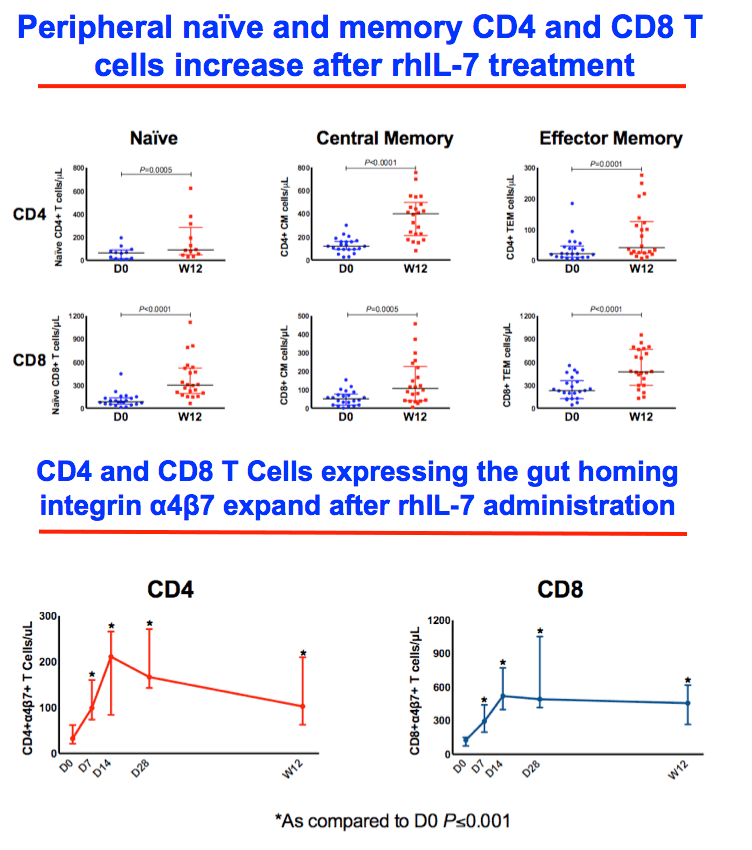
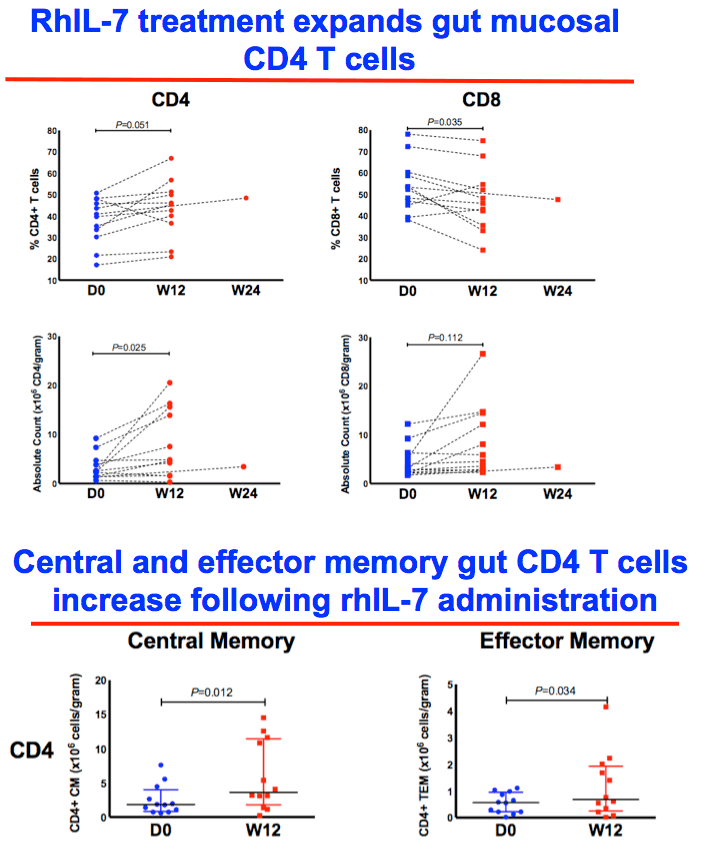
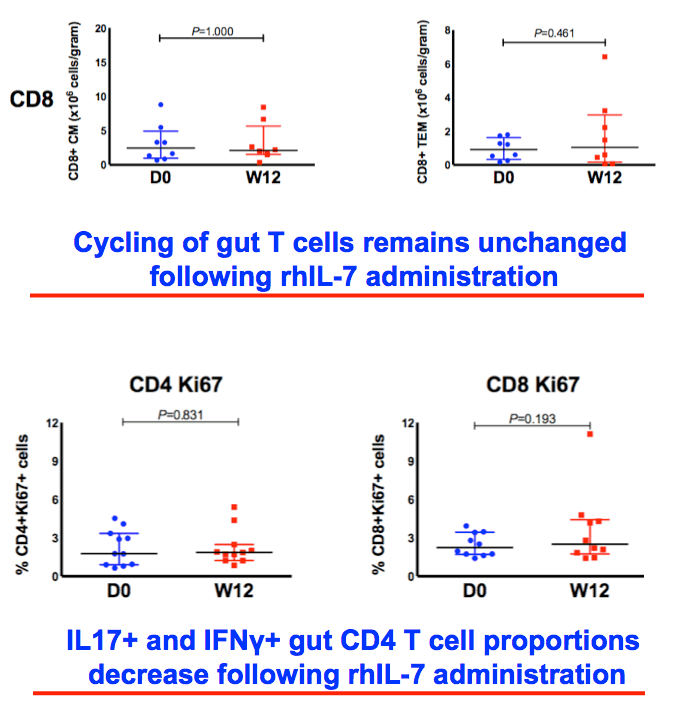
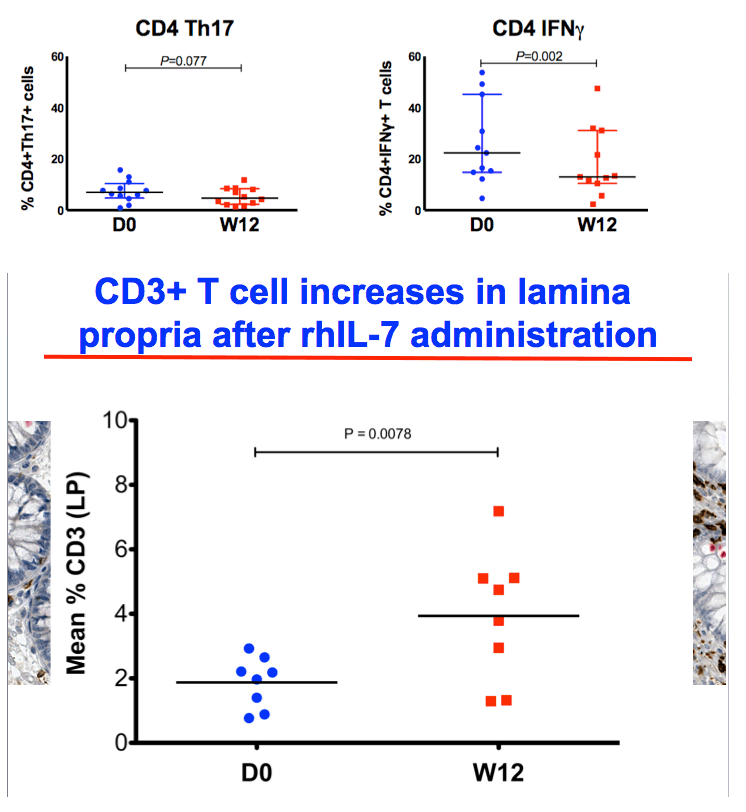
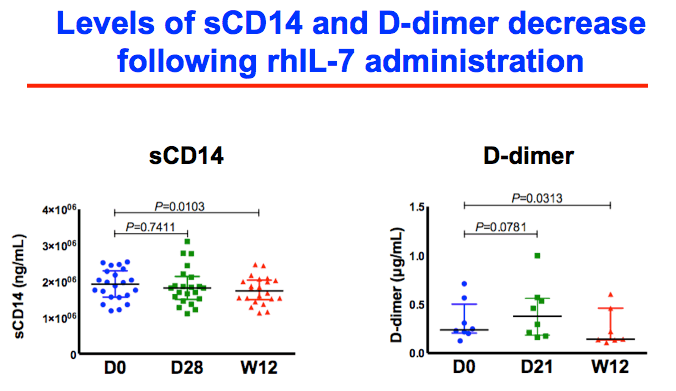
|
| |
|
 |
 |
|
|